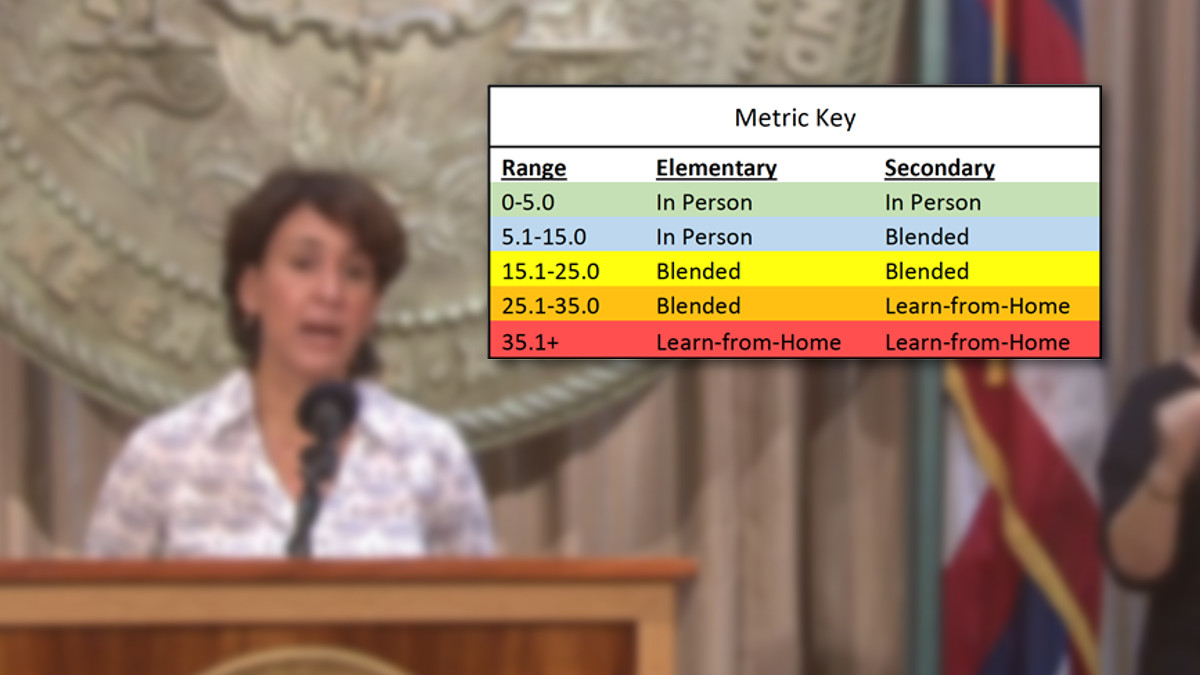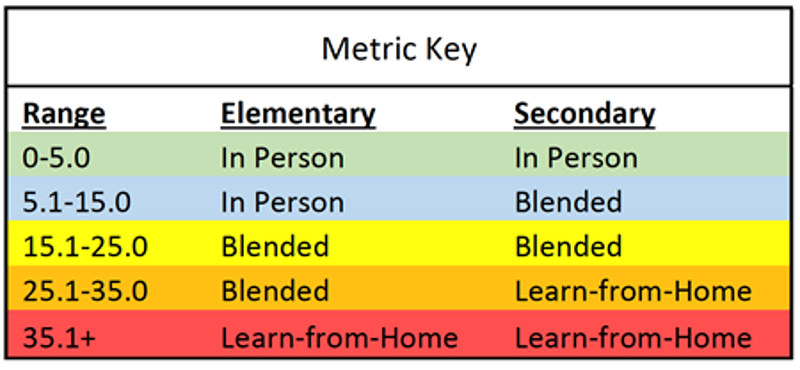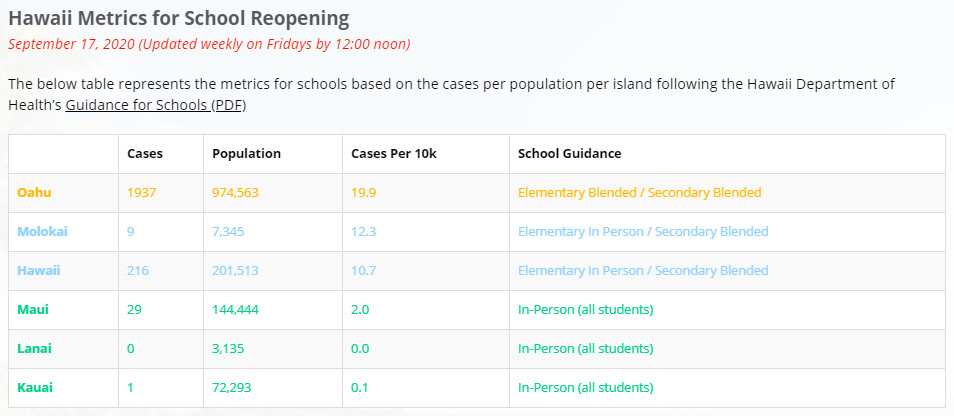Video by Governor David Ige, livestreamed on September 17, 2020.
(BIVN) – State officials held a news conference on Oʻahu today to announce a comprehensive, 28-page guidance document has been produced for all schools to help “ensure the education of Hawaiʻi’s youth during the pandemic continues with minimal disruption and risk to students, teachers and staff.”
For the first time, the Hawaiʻi Department of Health has provided the metrics that school leaders will be able to use when determining how best to respond to changing conditions within their communities.
The metrics are calculated by island, and under the guidance, Hawaiʻi island, with 216 cases in the past 14 days, would return elementary school students to in-person learning and secondary students to blended learning.
However, the return to school will be gradual, according to Hawaiʻi Department of Education Superintendent Dr. Christina Kishimoto. Schools “will be transitioning slowly back to a blended learning model over the second quarter,” Dr. Kishimoto said, and “we will not be returning to full, in-person instruction until after the winter break, and that will depend on continued guidance and what the metrics show about the positivity rates in Hawaiʻi.”
“Our guidance is based on mitigation strategies promoted by the Centers for Disease Control and Prevention approaches to school reopening that have been implemented in other states,” said Dr. Sarah Kemble, deputy state epidemiologist, who spearheaded the development of the document. “We recognize one size does not fit all, so instead of blanket statewide guidance, we developed a regional approach because disease transmission rates can differ on each island. This empowers school leaders to be responsive in the context of what is happening in their community.”
The Hawaiʻi health department stated in a news release:
Schools may choose from among three different learning models: learning from home in which students and teachers engage in virtual classes only, traditional in-person learning in the classroom, or a hybrid blended learning model that combines both home learning and in-person classroom learning.
The learning model is based on community transmission levels with different thresholds established for elementary and secondary students. This metric is the number of positive COVID-19 cases per 10,000 over a 14-day period by island. The Department of Health updates this metric every other week and posts this on its website.
It is important to note this metric is different from the number of cases by county or the number of year-to-date cases by county that are also reported by the health department through daily updates.
For example, Oʻahu, which has a population of 974,563, had a total of 1,937 cases from September 1 to 14. This translates to 19.9 cases per 10,000 for Oʻahu for that 14-day period. Based on the community transmission thresholds, both elementary and secondary schools should consider adopting a blended learning model.
In addition to community transmission levels, schools must also assess their preparedness and capacity to execute mitigation strategies. This includes implementing and enforcing physical distancing, providing face masks and face shields for all student support personnel, establishing cohorts or small groups of students and staff that remain together with limited mixing between groups, planning for students or staff who become sick at school, promoting appropriate hygiene, establishing a cleaning and disinfection schedule for high-touch surfaces, identifying a school COVID-19 program coordinator, limiting non-essential visitors at the school, and a communication plan when there is a positive case in the school.
This graphic, posted online by the State of Hawaiʻi today, shows what those metrics mean for the schools on each island, when applied to the case counts on those islands. Hawaiʻi island currently has about 10.7 cases per 10,000 residents every 14 days, meaning elementary school students would go to in-person learning and secondary students would go to blended learning.
The Hawaiʻi State Teachers Association panned the new guidance immediately. HSTA president Corey Rosenlee says the union was not consulted and will be fighting the guidance. A live, video news conference was held an hour after the governor’s announcement.
Video by HSTA, livestreamed on September 17, 2020.




by Big Island Video News12:44 pm
on at
STORY SUMMARY
HONOLULU, Hawaiʻi - Under the new guidance, Hawaiʻi island schools would return to in-person learning for elementary school students and blended learning for secondary students.